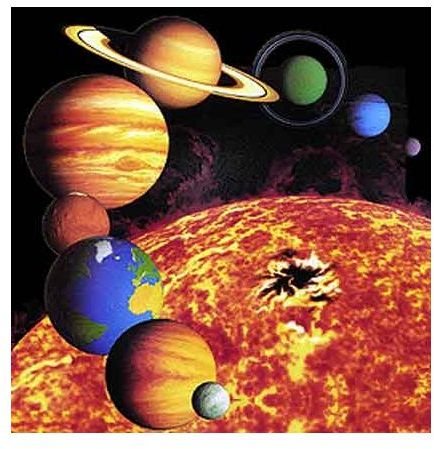National Geographic DVD Naked Science: Deadliest Planets Review
Solar System
Synopsis
National Geographic’s DVD <em>Naked Science: Deadliest Planets</em> examines our solar system’s planets in order to determine which of them might be suitable for human settlement. The title is somewhat misleading: it mentions death, while the show, in fact, is about life. During most of the DVD we are presented with fascinating scientific data about our own little piece of cosmos; near the end, we are treated to some recent discoveries concerning other suns – and planets.
The DVD abounds with astounding, contrasting cinematography. In order to illustrate the harsh environment on potential settlement locations, the show incorporates 3 dimensional rendering of the discussed planets. 3-D imaging displays other stars and the Milky Way as well – and it’s fascinating to take a look at our own galaxy from a different angle, even if it’s only a digital simulation.
Additionally, the DVD includes interviews with scientists: astronomers, volcanologist and geologists – all of which provide an important authoritative voice. Undoubtedly, one of the secondary objectives of the program is to intrigue children and young adults with the range of presented professions, all involving some kind of research. My personal favorite is “planet hunting.”
Experiments and Useful Comparisons
hat makes Naked Science: Deadliest Planets accessible to viewers of all ages is the earth-centric approach: every unusual phenomenon is presented through a comparison with a similar occurrence on our own planet. For instance, when the narrator describes the levels of cold on Mercury – 300 degrees Fahrenheit – he adds that this is twice as cold as the coldest recorded temperature on Earth. Some of these comparisons are quite comical, or outlandish. The pressure inside Jupiter’s core, for example, is equated to a thousand elephants standing on a stiletto heel.
The elephant-stiletto heel juxtaposition is characteristic of the show’s vivid descriptions of the potential dangers future colonizers might face – it shocks us by confronting the extremely small with the extremely big. On a more serious, but according note, the program reveals that sun’s radiation has the capacity to destroy DNA – a true clash of the microscopic with the astronomically large.
The program includes experiments that demonstrate the effects of extreme weather conditions. I particularly loved the one where two scientists submerge a rubber ball into liquid nitrogen: the ball becomes so frozen it shatters into little pieces upon hitting a hard surface. The benefit of showing real experiments is difficult to overstate – sometimes verbal and visual metaphors aren’t enough (or become tiresome), and a real, hands-on try-out is needed to convey a certain point.
Conclusion
Overall, Naked Science: Deadliest Planets offers a few surprises (I could have never imagined that the weather on such giant and remote planets such as Jupiter or Neptune is actually easier to predict than the weather on Earth) and a lot of fun. Even if astronomy is not your thing, the program offers stunning visuals and engaging narration – sneaking educational value in between.
